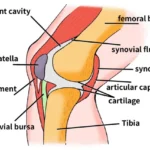Introduction
Arm pain can be debilitating, affecting everything from daily activities to sleep quality. Whether it’s caused by an injury, overuse, or a chronic condition, finding effective relief is crucial for maintaining your quality of life. Massage therapy has emerged as a popular and effective treatment for various types of arm pain. This comprehensive article will explore the benefits of massage therapy for arm pain, including how it works, the different types of massage techniques, and frequently asked questions to help you make informed decisions about your care.
Chapter 1: Understanding Arm Pain
Causes of Arm Pain
Arm pain can stem from a variety of causes, including:
- Muscle Strain: Overuse or sudden movements can lead to muscle strain, which is a common cause of arm pain.
- Tendinitis: Inflammation of the tendons, often due to repetitive motion, can cause pain and discomfort.
- Nerve Compression: Conditions like carpal tunnel syndrome or a pinched nerve can result in pain that radiates down the arm.
- Arthritis: Inflammation of the joints, particularly in the elbow or wrist, can cause chronic pain.
- Injuries: Fractures, dislocations, or sprains can lead to acute or lingering pain in the arm.
- Repetitive Strain Injuries (RSIs): These are common in individuals who perform repetitive tasks, such as typing or manual labor.
Symptoms Associated with Arm Pain
Arm pain can present in various ways, depending on the underlying cause:
- Sharp or Dull Pain: Pain can range from a sharp, stabbing sensation to a dull ache.
- Numbness or Tingling: These sensations, particularly in the hands or fingers, may indicate nerve involvement.
- Weakness: Difficulty gripping objects or weakness in the arm can be a symptom of nerve or muscle issues.
- Swelling: Inflammation or injury can cause visible swelling in the affected area.
- Stiffness: Limited range of motion, particularly after periods of inactivity, is common in conditions like arthritis.
Traditional Treatments for Arm Pain
Traditional treatments for arm pain typically include:
- Rest: Allowing the affected arm to rest and heal is often the first step in treatment.
- Physical Therapy: Exercises designed to strengthen the muscles and improve flexibility can help alleviate pain.
- Medications: Over-the-counter pain relievers and anti-inflammatory drugs are commonly used to manage symptoms.
- Surgery: In severe cases, such as fractures or severe nerve compression, surgery may be necessary.
While these treatments can be effective, many people seek alternative therapies, such as massage, to complement their pain management strategies.
Chapter 2: How Massage Therapy Helps with Arm Pain
What Is Massage Therapy?
Massage therapy involves the manipulation of soft tissues, including muscles, tendons, and ligaments, to relieve pain, improve circulation, and promote overall wellness. It has been practiced for thousands of years in various cultures and continues to be a popular treatment option for musculoskeletal pain.
Mechanisms of Massage Therapy for Pain Relief
Massage therapy helps alleviate arm pain through several mechanisms:
- Increased Blood Circulation: Massage promotes better blood flow to the affected area, which can accelerate the healing process by bringing more oxygen and nutrients to the tissues.
- Reduction of Muscle Tension: By relaxing the muscles, massage helps to reduce tension and relieve pain associated with muscle strain or overuse.
- Trigger Point Release: Massage therapists can identify and release trigger points, which are tight knots in the muscles that often cause referred pain.
- Nerve Stimulation: Certain massage techniques stimulate the nervous system, which can help reduce pain perception.
- Reduction of Inflammation: Massage can help reduce inflammation in the muscles and joints, providing relief from conditions like tendinitis or arthritis.
- Enhanced Range of Motion: By improving muscle flexibility and reducing stiffness, massage therapy can enhance the range of motion in the affected arm.
Types of Massage Techniques for Arm Pain
Several massage techniques are particularly effective for treating arm pain:
- Swedish Massage: This is a gentle form of massage that uses long strokes, kneading, and circular movements to relax the muscles and improve circulation.
- Deep Tissue Massage: This technique targets the deeper layers of muscle and connective tissue, helping to relieve chronic pain and tension.
- Trigger Point Therapy: Focuses on releasing tight areas within the muscles that are causing pain in other parts of the body.
- Sports Massage: Often used by athletes, this technique helps prevent and treat injuries, improve flexibility, and enhance performance.
- Myofascial Release: This technique involves applying gentle sustained pressure to the connective tissue to relieve pain and improve movement.
- Hot Stone Massage: The use of heated stones in combination with traditional massage techniques can help reduce muscle tension and pain.
Benefits of Massage Therapy for Arm Pain
Massage therapy offers several benefits for those suffering from arm pain:
- Pain Relief: By targeting the muscles and tissues directly, massage can provide immediate pain relief.
- Reduced Muscle Tension: Regular massage helps to keep muscles relaxed, reducing the likelihood of future pain.
- Improved Flexibility: Massage can help maintain or improve the range of motion in the arm, which is particularly beneficial after an injury.
- Enhanced Healing: By improving circulation and reducing inflammation, massage can accelerate the body’s natural healing processes.
- Stress Reduction: Massage therapy is also known for its ability to reduce stress, which can contribute to overall pain relief.
Chapter 3: The Science Behind Massage Therapy for Arm Pain
Research Supporting Massage Therapy
Numerous studies have demonstrated the effectiveness of massage therapy in relieving musculoskeletal pain, including arm pain:
- Pain Management: Research has shown that massage therapy can significantly reduce pain levels in individuals with conditions such as carpal tunnel syndrome, tendinitis, and muscle strain.
- Improved Functionality: Studies indicate that massage can improve grip strength and functionality in patients with arm injuries or chronic conditions.
- Reduced Inflammation: Research supports the idea that massage therapy can lower inflammatory markers in the body, helping to reduce pain and swelling.
- Mental Health Benefits: Massage therapy has been shown to reduce symptoms of anxiety and depression, which are often associated with chronic pain conditions.
Physiological Effects of Massage
Massage therapy has several physiological effects that contribute to pain relief:
- Release of Endorphins: Massage stimulates the release of endorphins, the body’s natural painkillers, which can reduce pain perception.
- Lowered Cortisol Levels: By reducing stress, massage helps lower cortisol levels, a hormone associated with inflammation and pain.
- Enhanced Lymphatic Drainage: Massage promotes the movement of lymphatic fluid, which helps remove toxins and reduce inflammation.
- Improved Neural Function: Regular massage can enhance neural function, leading to better muscle coordination and pain management.
Comparative Effectiveness
When compared to other treatment modalities, such as physical therapy or medication, massage therapy often stands out for its holistic approach:
- Non-Invasive: Unlike surgery or injections, massage is a non-invasive treatment that poses minimal risks.
- Complementary: Massage can be used in conjunction with other treatments, such as physical therapy or medication, to enhance overall pain management.
- Customization: Massage therapy can be tailored to the individual’s specific needs, whether they require deep tissue work or a more gentle approach.
Chapter 4: How to Incorporate Massage Therapy into Your Pain Management Plan
Finding a Qualified Massage Therapist
To get the most benefit from massage therapy for arm pain, it’s important to find a qualified massage therapist:
- Credentials: Look for a therapist who is licensed and certified by a recognized body, such as the American Massage Therapy Association (AMTA).
- Experience: Choose a therapist with experience in treating musculoskeletal pain, particularly in the arms.
- Specialization: Some therapists specialize in techniques that are particularly effective for arm pain, such as deep tissue massage or trigger point therapy.
- Referrals: Ask your healthcare provider for recommendations or read online reviews to find a reputable therapist in your area.
Creating a Massage Therapy Schedule
To maximize the benefits of massage therapy, it’s important to establish a regular schedule:
- Frequency: Depending on the severity of your arm pain, you may need to start with weekly sessions, gradually reducing the frequency as your condition improves.
- Duration: Sessions typically last between 30 and 60 minutes. Discuss with your therapist what duration is best for your needs.
- Consistency: Regular sessions are key to maintaining the benefits of massage therapy. Consider incorporating massage into your long-term pain management plan.
Combining Massage with Other Treatments
Massage therapy is most effective when used as part of a comprehensive treatment plan:
- Physical Therapy: Combining massage with physical therapy can enhance muscle strength and flexibility.
- Exercise: Regular exercise, such as stretching or strengthening exercises, can complement the effects of massage.
- Medications: If you are taking pain medications, massage can help reduce your reliance on them by providing natural pain relief.
- Diet and Hydration: A healthy diet and adequate hydration can support your body’s healing processes and improve the effectiveness of massage therapy.
Self-Massage Techniques
In addition to professional massage therapy, you can incorporate self-massage techniques into your routine:
- Foam Rolling: Using a foam roller on the muscles of your arms can help relieve tension and improve circulation.
- Tennis Ball Massage: A tennis ball can be used to apply pressure to trigger points in the forearm or shoulder.
- Stretching: Incorporating stretching exercises into your routine can help maintain muscle flexibility and prevent future pain.
Chapter 5: Frequently Asked Questions (FAQs)
Can massage therapy really help with chronic arm pain?
Yes, massage therapy can be highly effective in managing chronic arm pain. By improving circulation, reducing muscle tension, and promoting relaxation, massage can provide significant pain relief and improve overall functionality.
How often should I get a massage for arm pain?
The frequency of massage therapy sessions depends on the severity of your pain and your individual needs. For acute pain, weekly sessions may be beneficial, while chronic pain might require less frequent maintenance sessions.
What type of massage is best for arm pain?
The best type of massage for arm pain depends on the underlying cause. Deep tissue massage is often recommended for chronic pain, while Swedish massage may be better for relaxation and overall muscle tension. Trigger point therapy is effective for addressing specific areas of pain.
Can I use massage therapy in conjunction with other treatments?
Yes, massage therapy can be used alongside other treatments such as physical therapy, medications, and exercise. It is a complementary therapy that can enhance the overall effectiveness of your pain management plan.
Are there any risks associated with massage therapy for arm pain?
While massage therapy is generally safe, there are some risks, particularly if you have certain medical conditions. It’s important to inform your massage therapist of any health issues, such as blood clots, fractures, or severe inflammation, before beginning treatment.
Can self-massage techniques be effective for arm pain?
Self-massage techniques, such as foam rolling or using a tennis ball, can be effective in relieving mild to moderate arm pain. These techniques can be a good supplement to professional massage therapy.
How long does it take to see results from massage therapy?
Many people experience immediate relief after a massage session, but the long-term benefits often require regular treatments over several weeks or months. Consistency is key to achieving and maintaining pain relief.
Can massage therapy prevent future arm injuries?
Regular massage therapy can help maintain muscle flexibility and reduce tension, which may lower the risk of future injuries. It is particularly beneficial for individuals who engage in repetitive motions or strenuous activities.
What should I expect during a massage therapy session for arm pain?
During a massage therapy session, your therapist will assess your condition and discuss your pain symptoms. The session will typically involve various massage techniques aimed at relieving tension and pain in the affected arm. You may feel some discomfort during deep tissue work, but the overall experience should be relaxing.
How do I choose the right massage therapist for my arm pain?
When choosing a massage therapist, look for someone who is licensed and experienced in treating musculoskeletal pain. Ask for recommendations from healthcare providers or read reviews online to find a therapist who specializes in the type of treatment you need.
Conclusion
Massage therapy is a powerful tool in the management of arm pain, offering a natural and effective way to relieve discomfort, improve mobility, and enhance overall well-being. By understanding the benefits of massage and incorporating it into your pain management plan, you can achieve lasting relief and prevent future injuries. Whether you’re dealing with an acute injury or chronic condition, massage therapy can play a crucial role in your journey to recovery.





